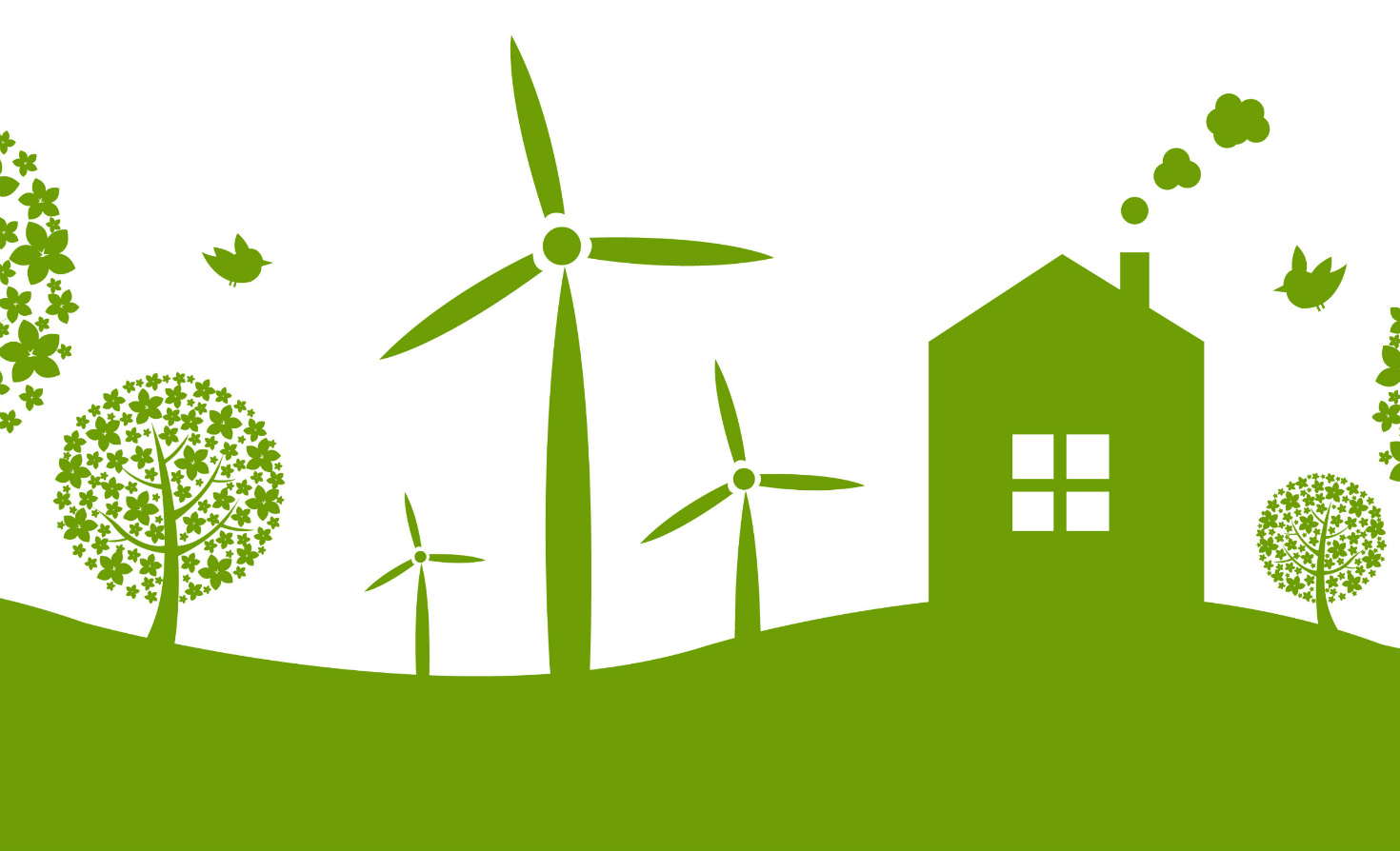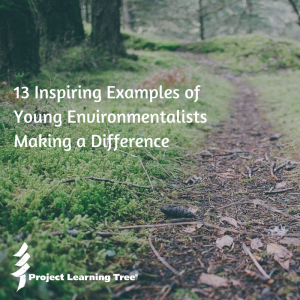
Education on climate change has the potential to have a major impact on the future and survival of the planet. A comprehensive education on the subject will not only increase young people's capacity to address climate change, but it can also reduce the negative impacts of a changing climate.
Educators must have the right tools and resources to help them incorporate climate change into their classrooms. They must have an understanding of what the curriculum should include, how it should be taught, and how it should be assessed. There are many resources for educators that can be used at no cost. These resources include video, games, and book suggestions.

Years of Living Dangerously offers a series of interrelated lessons that help students understand the effects of climate change on the Earth. The curriculum encourages students examine the implications of climate change and offer solutions. This program is science-based and includes writing projects, hands-on activities, and service learning opportunities. The curriculum can also be customized by educators to suit their particular needs.
The National Education Association acknowledges that climate change is caused primarily by human activity. Both students and teachers should be concerned about this. During a course offered by Columbia University's Center for Sustainable Development, students learn about the various factors that influence Earth's climate. The course encourages students to get involved in local coalitions, and advocate for action.
National Park Service's Climate Change Response Program has many educational videos. For example, in the lesson "The Human Impacts of Climate Change", students learn about how a warming climate is affecting ecosystems and weather patterns. Videos in multiple languages are available for educators.
The Siemens Stiftung Media Portal contains a wide variety of resources, from video clips to interactive graphics. Teachers will find a wide range of resources here, including worksheets or an abbreviated IPCC report.

Teach Climate Justice aims to educate young people on the dangers of climate changes, while also addressing issues such as race, economic inequality, militarism. One of the campaign's members, an 18-year-old climate campaigner, has been campaigning since he was 13 years old. He is now seeking to make major changes in the school curriculum.
One of the most significant behavioral changes to occur is the shift in energy usage. There are many scientific studies available that demonstrate how we can reduce our energy consumption, and the negative consequences of a warming world.
Zinn Education Project provides other important resources. They offer free resources related to climate change education. To get started, educators can access graphics, videos, and lessons.
Although teaching climate change can be difficult, educators are making good progress. New Jersey is one of the first states to adopt standards to teach climate change education. Since that year, several state-level learning requirements have been established. Some of these standards include social studies and languages around the world.
FAQ
What is the potential of new technologies to combat climate changes?
New technologies have the potential to solve this global challenge. Advanced science is making it possible to shift to a more sustainable world.
For lowering greenhouse gas levels, there are new carbon capture and sequestration methods. In addition to reducing emissions from livestock and soil degrading, enhanced agricultural practices can help reduce them. Smart grid technology can be combined with existing power infrastructure to increase efficiency. Additionally, improved building design can reduce energy consumption.
Researchers can also use cutting-edge synthetic biology to develop organisms that can convert green fuels like CO2 laser into biofuels and other feedstocks. This could make transportation more efficient if the market moves away from petrol-powered vehicles and towards zero-emission electric cars that are powered by clean energy.
Finally, investing in digital technology and AI will help people from all over the world gain access to information about their environmental footprint and make informed decisions about how they consume. Understanding our role in carbon production will allow us to all be better stewards for our planet.
What role does climate change play in greenhouse gas emissions?
Greenhouse gasses are key to climate change. They act as an invisible layer around the Earth trapping infrared radiation. This warms the atmosphere. Without them, the Earth would be much colder today than it is today.
The human activity of burning fossil fuels, or other industries that generate emissions, can create greenhouse gases. These activities will continue to increase heat trapping in the atmosphere. This will lead to increasing temperatures and extreme weather conditions.
Carbon dioxide (CO2) is the most common greenhouse gas. It is produced when fossil fuels like coal, oil and gas are burned. Important contributors are also methane and nitrousoxide (N2O), as well fluorinated gases (Fgases).
Because of human activities, the concentrations of greenhouse gases have increased substantially since preindustrial days. Global warming has caused an increase in temperature all around the globe, and in our oceans. It is also causing drastic changes, such as increased storms, droughts, melting glaciers and rising ocean levels.
To prevent further climate change-related damage, humanity must reduce its greenhouse gas emissions by moving away from fossil fuels and towards renewable energy sources like wind or solar power. Reforestation and other agricultural practices can be used to absorb more CO2 from air. These activities will lower the atmospheric concentrations of greenhouse gasses and make the Earth a more healthy place for all life.
What can be done to reduce or mitigate the effects of climate change?
There are various measures that can be taken to reduce and mitigate the effects of climate change. These include reducing greenhouse emissions by using greener energy sources and better energy practices. It is important to increase public awareness about climate change as it makes people feel accountable for their actions.
What is climate Change and how does this happen?
Climate change is the long term shift in global weather patterns resulting from an increase of greenhouse gases. These gases trap heat and cause global temperatures to rise, which can lead to a variety of changes in weather patterns and climate. This can include rising sea levels, melting glaciers, extreme storms and droughts, widespread coral reef bleaching, species extinction, and disruptions to food production.
Climate change is primarily caused by human activity, such as the burning of fossil fuels for electricity, transportation, and cutting down forests. These activities emit large amounts of carbon dioxide (CO2) into our atmosphere, which causes the planet to heat up faster than natural processes such as volcanic eruptions.
The deforestation plays an important role in contributing approximately 15-20% to global greenhouse gas emissions. Deforestation is when trees are cut down and burned. This releases carbon dioxide from the trees back into the atmosphere. Furthermore, forests act like a natural carbon sink and remove CO2 from air. Without this absorption capacity carbon dioxide levels will continue rising with devastating consequences to ecosystems all over the world.
Not only does CO2 release into the atmosphere but it also releases other harmful gasses, such as methane(CH4) and nitrogen oxide (N2O). Methane has been used extensively in industrial processes and contributes significantly to atmospheric warming while N2O is emitted primarily from agricultural soil management activities like fertilization or tilling which release excess levels of nitrogen into soil leading to N2O production upon microbial contact.
To minimize climate change humanity must make concerted efforts across social, economic, and political institutions to reduce these emissions drastically and transition away from our dependence on fossil fuels towards renewable energy sources such as solar, wind power, or low-carbon hydrogen fuels. A smart approach to reducing atmospheric contamination and preventing CO2 accumulation could be to replace polluting fossil-fuel technologies with ones that encourage zero-waste living. Our environmental impacts can be reduced by adopting preservation measures like reforestation. These projects help to preserve biodiversity and absorb large amounts CO2 from the environment. This helps in addressing climate change and restoring balance for future generation.
What are some solutions to climate changes? And how effective do they work?
Climate change is an urgent issue, and it requires immediate attention from government, business, and citizens. A disrupted climate system is evident by rising temperatures, extreme weather events and increased sea levels. To attempt to tackle this phenomenon, multiple proposed solutions have been put forward ranging from technological solutions, and behavioral changes to geoengineering.
Technological Solutions: An array of solutions have arisen to address climate change through changes in technology. Renewable energy sources like solar and wind power provide reliable, clean energy that has minimal environmental side effects. Electric cars powered entirely by renewable energy could replace petrol vehicles and significantly reduce pollution. Reforestation projects are another technological option that aim to increase carbon sequestration, soil and trees. They also provide coastal protection systems to protect vulnerable areas from rising ocean levels.
Simple behavioral changes can help reduce emissions and limit future climate disruption. For example, purchasing locally produced goods with shorter supply chains reduces emissions associated with transport costs for food. Using public or active transportation instead of personal cars also optimizes the use of resources and brings down cost and air pollution simultaneously; similarly opting for more efficient home insulation can reduce reliance on gas boilers for heating homes reducing emissions also lowering bills over time.
Geo-engineering (GEO): This involves large-scale interventions into natural systems that may be too risky because of potentially unforeseeable consequences.
These solutions are only as effective as the producers who invest in green alternatives. Currently, electric Cars are more expensive than petrol models. However, economic incentives favoring green investments play an important role in incentivizing alternative solutions uptake. Market forces cannot guarantee their utility so they must be mandated via policy measures. This will require regulatory bodies to engage all players further. Nontechnological solutions work on one level while solving global warming requires everyone involved.
What are the impacts of climate change on developing countries and communities?
Developing countries and communities are particularly vulnerable to the effects of climate change due to limited access to resources, healthcare systems, and technology. Changes in temperature, precipitation, and sea levels increase pressure on already scarce resources, with floods and droughts wearing away at already fragile ecosystems. Rising temperatures can result in a reduction in crop yields. This will be disproportionately detrimental to poorer communities who are facing food insecurity. Extreme weather events like hurricanes or heatwaves can also cause destruction to infrastructure, causing further economic inequality.
Long-term consequences of climate change include increased resource scarcity and poverty as well as health effects such as an increase in vector-borne diseases like malaria or dengue fever. A rise in sea levels and extreme weather events will lead to increased flooding. This could put lives at risk in coastal regions, where there is often a lack of emergency services or infrastructure. Not only does it require reducing greenhouse gas emissions, but other measures like better management and access to medical facilities. This will help with the prevention of diseases like Malaria.
What can we do to help the climate change process?
Climate change can be attributed to human activity. According to the Intergovernmental Panel on Climate Change, humans have contributed more than 70% of global warming since mid-20th century.
Burning Fossil Fuels: Burning fossil fuels such as coal, oil, and gas releases carbon dioxide into the atmosphere. This will increase the atmospheric CO2 levels already present. It acts as a "greenhouse gases" by trapping heat in Earth's atmosphere, increasing temperatures even more. This results in higher ocean levels because Arctic ice mellows and causes weather patterns to change around the world, which can lead to severe storms, droughts or floods. These could impact food production and pose a threat to human health.
Deforestation. Trees that absorb atmospheric carbon dioxide from the atmosphere in photosynthesis will be effected by being cut down. Reduced forest cover can also increase albedo, which is the amount of reflected sunlight coming back into space. This reduces solar heat absorption at the surface of the earth and promotes global warming. Deforestation is also associated with respiratory problems and local air quality.
Farming is responsible for 14% to 18% of all anthropogenic greenhouse emissions globally each year. Because of its high methane content, animal waste emits large amounts methane into the atmosphere. Reducing your intake of animal products is an effective way to lower your greenhouse gas emissions. Nitrous oxide can also be released into our atmosphere. This creates smog that harms our respiratory system.
Conclusion: Human activity has had a profound impact on the environment for centuries. However, technology has made it possible to leverage green innovation and make eco-friendly efforts to combat climate change. This will ensure that everyone is safe while prospering in nature.
Statistics
- features Earth's average surface temperature in 2022 tied with 2015 as the fifth warmest on record, according to an analysis by NASA. (climate.nasa.gov)
- According to the 2014 report on Climate Change Impacts, Adaptation, and Vulnerability (page 8) from the United Nations Intergovernmental Panel on Climate Change, governments at various levels are also getting better at adaptation. (climate.nasa.gov)
- features Earth's average surface temperature in 2022 tied with 2015 as the fifth warmest on record, according to an analysis by NASA. (climate.nasa.gov)
- According to the 2014 report on Climate Change Impacts, Adaptation, and Vulnerability (page 8) from the United Nations Intergovernmental Panel on Climate Change, governments at various levels are also getting better at adaptation. (climate.nasa.gov)
- The 100 least-emitting countries generate 3 per cent of total emissions. (un.org)
External Links
How To
How to Make Your Home More Energy-Efficient and Combat Climate Change
Your home's energy efficiency is one of the most cost-effective ways to cut your carbon footprint, lower your utility bills, and improve your quality of life.
You must ensure that your home is properly insulated. You must ensure that your windows and doors fit properly. If you find drafts around pipes or vents, make sure to add weather stripping and fill in any gaps with caulking around door frames and window frames.
Insulate walls, ceilings and floors for maximum energy efficiency. Check for air leaks in the attic or other areas of your home that are not well-insulated.
Lighting accounts for approximately 18% household electricity consumption. You should switch to LED lights, which use as little as 80% of traditional incandescent lamps. Installing motion sensors and timers will also help you save additional money by turning off lights as needed.
Replacing an old boiler or furnace can dramatically reduce energy bills as newer models are much more efficient. A programmable thermostat allows you to control the temperature based on who is home and who is away.
Replace all windows with double-glazed replacements that provide greater insulation and prevent heat loss. Low-flow showerheads reduce water consumption and maintain adequate pressure.
ENERGY STAR rated appliances are more efficient than non-certified models and can use as much as 50% less power. Do not forget to unplug electronic devices, such TV boxes or phone chargers, when not in usage. This can help you save considerable energy.
These steps can make living at home easier and less stressful.